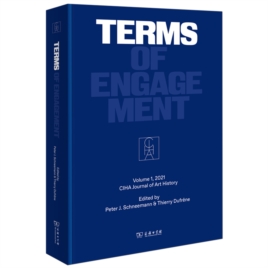显示全部编辑推荐
艺术家和艺术史学家永不停歇的“介入”。
1. 为世界各地艺术史的研究学者提供展示学术成果的平台。
2. 从北美原住民当代艺术到中国传统书法,再到巴洛克艺术,本书主题广泛、多元,对于普通的艺术和艺术爱好者来说,是一个了解各国艺术的窗口。
3. 集结世界各国大学、研究所的艺术家与艺术史学者,作者们以深厚的学术与理论功底,对“介入”这一概念做深入诠释。国内艺术史、艺术理论等领域的研究者读来也会有所启发和帮助。

定价:¥150.00
艺术家和艺术史学家永不停歇的“介入”。
1. 为世界各地艺术史的研究学者提供展示学术成果的平台。
2. 从北美原住民当代艺术到中国传统书法,再到巴洛克艺术,本书主题广泛、多元,对于普通的艺术和艺术爱好者来说,是一个了解各国艺术的窗口。
3. 集结世界各国大学、研究所的艺术家与艺术史学者,作者们以深厚的学术与理论功底,对“介入”这一概念做深入诠释。国内艺术史、艺术理论等领域的研究者读来也会有所启发和帮助。
CIHA Journal of Art History (国际艺术史学会学刊)旨在为世界各地艺术史研究学者创造一个展示自己学术成果的平台,以此促进国际艺术史研究与艺术史教育的交流与发展。主编Peter J. Schneemann(彼得•施内曼)和Thierry Dufrêne(蒂里•迪弗勒内)选取由中国、瑞士、墨西哥等七个国家的十五位学者完成的十三篇论文,展示不同文化背景的学者如何理解、阐释“介入”这一概念。尽管研究对象多元、研究者背景迥异,但十三篇文章都或多或少地指向一个理念:艺术家的艺术创造,艺术史家对艺术作品的研究,本就是一种介入公共生活的方式。
Thanks in part to the work of Wassily Kandinsky and Piet Mondrian, Abstract Expressionism has freed Art from the shackles of representation, although how to study non-representational art remains an issue. Besides mentalité and sociohistorical contexts, we need to study the noumenon of Art as well. As an epitome of the noumenon of Art, shufa provides a critical lens for us to rethink the issue of engagement, in reference to both arts in its infancy, during early human history, and modern art such as abstract art.
Chinese art history is not all about shufa and xieyi painting, beyond which there are plentiful written documents, visual images, and material cultures worthy of research. The tripartite of image-word-thing as a gateway of studying human civilization serves to validate seemingly “non-artistic” images or objects as suitable subjects for historical study. As a discipline of the Humanities, Art History has been steering towards imagology (Bildwisssenschaft), i.e., studying images as a way of addressing a wide range of issues on history and humanity. This does not mean we no longer need history of art-itself, i.e., art in history. If our study of images fails to address the core aesthetic ideas and values that have come into being in a culture in the longue durée, then it can only be counted as a science of picture, not Art History.
京ICP备05007371号|京ICP证150832号|![]() 京公网安备 11010102001884号 版权所有 2004 商务印书馆
京公网安备 11010102001884号 版权所有 2004 商务印书馆
地址: 北京王府井大街36号|邮编:100710|E-mail: bainianziyuan@cp.com.cn
产品隐私权声明 本公司法律顾问: 大成律师事务所曾波律师